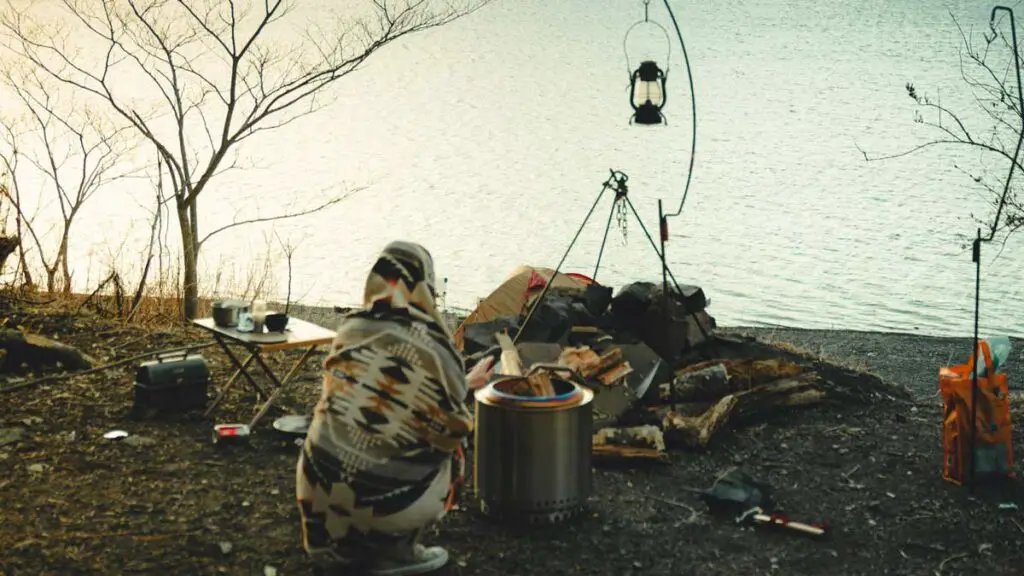Are You Prepared?
You never know when disaster may strike, and having a bug-out location can provide you and your loved ones with a safe place to go in times of trouble. In this article, we will discuss key considerations and tips for building a bug-out location that can help you be better prepared for any emergency situation.
What is a Bug-Out Location?
A bug-out location is a predetermined place where you and your family can go in case of a disaster. This location should be self-sustaining and provide shelter, food, and water for an extended period of time. It is important to have a bug-out location in a remote area, away from densely populated areas, where you can seek refuge when needed.

Key Considerations for Building a Bug-Out Location
When planning your bug-out location, there are several key considerations to keep in mind to ensure that it is effective and sustainable in case of an emergency.
Location
Choosing the right location for your bug-out location is crucial. It should be in a remote area, away from major cities and towns, to reduce the risk of being affected by the disaster. Consider factors such as accessibility, proximity to essential resources like water sources and arable land, and security when selecting a location for your bug-out spot.
Accessibility
Your bug-out location should be easily accessible by foot, bicycle, or off-road vehicle. Make sure to plan multiple routes to your bug-out location in case one is blocked or unsafe to travel on. Having alternative ways to reach your bug-out location ensures that you can get there quickly and safely in an emergency.
Water Supply
Access to clean water is essential for survival, so make sure that your bug-out location has a reliable water source. Consider installing a rainwater collection system, digging a well, or securing a nearby stream or river as a water supply for your bug-out location. It is crucial to have a backup plan in case the primary water source becomes contaminated or runs dry.
Shelter
Your bug-out location should have a secure and sturdy shelter to protect you from the elements and any potential threats. Consider building a cabin, bunker, or yurt that is well-insulated and can withstand extreme weather conditions. Stockpile building materials and tools at your bug-out location to make repairs and improvements as needed.
Food Storage
Having an adequate food supply at your bug-out location is essential for long-term survival. Stockpile non-perishable food items like canned goods, dried beans, rice, and emergency food rations that have a long shelf life. Consider growing a vegetable garden, raising livestock, or hunting and fishing in the surrounding area to supplement your food supply.
Security
Ensuring the security of your bug-out location is crucial to protect yourself and your family from potential threats. Install security measures like fences, locks, and alarms to deter intruders and keep your bug-out location secure. Consider forming a community with like-minded individuals to provide mutual support and protection in case of an emergency.

Tips for Building a Bug-Out Location
Building a bug-out location can be a challenging and time-consuming process, but with careful planning and preparation, you can create a safe and sustainable retreat for you and your family in times of crisis. Here are some tips to help you build a bug-out location that meets your needs and keeps you prepared for any emergency situation.
Start Small and Scale Up
When building your bug-out location, it is essential to start small and scale up as needed. Begin with basic shelter, water, and food supplies, and gradually expand and improve your bug-out location over time. Focus on essentials like shelter, water, and food security before moving on to more advanced projects like renewable energy and self-sufficiency.
Plan for Long-Term Sustainability
When designing your bug-out location, consider how you can make it self-sustaining in the long term. Invest in renewable energy sources like solar panels or wind turbines, establish a waste disposal system, and implement permaculture practices to ensure that your bug-out location can support you and your family for an extended period of time.
Practice Regular Maintenance
Maintaining your bug-out location is essential to ensure that it remains functional and secure in case of an emergency. Schedule regular maintenance tasks like checking for leaks, inspecting food supplies, testing security measures, and repairing any damage to the shelter or infrastructure. By staying on top of maintenance, you can avoid costly repairs and keep your bug-out location operational when you need it most.
Conduct Regular Drills
To ensure that your bug-out location is effective in an emergency, it is essential to conduct regular drills with your family or group. Practice evacuating to your bug-out location using different routes, test your water and food supplies, and simulate different disaster scenarios to identify any gaps in your preparedness plan. By practicing regularly, you can ensure that everyone knows their roles and can respond quickly and efficiently in a crisis.
Establish Community Connections
Building a bug-out location is not just about creating a physical shelter—it is also about building a community of like-minded individuals who can support each other in times of need. Reach out to neighbors, friends, or local prepper groups to establish connections and share resources and information. By working together, you can create a stronger and more resilient community that can weather any storm.

Conclusion
Building a bug-out location is a crucial step in preparing for emergencies and ensuring the safety and security of you and your loved ones. By considering key factors like location, accessibility, water supply, shelter, food storage, and security, and following tips for building and maintaining your bug-out location, you can create a safe and sustainable retreat that will help you weather any disaster that comes your way. Stay prepared, stay safe, and start building your bug-out location today.

